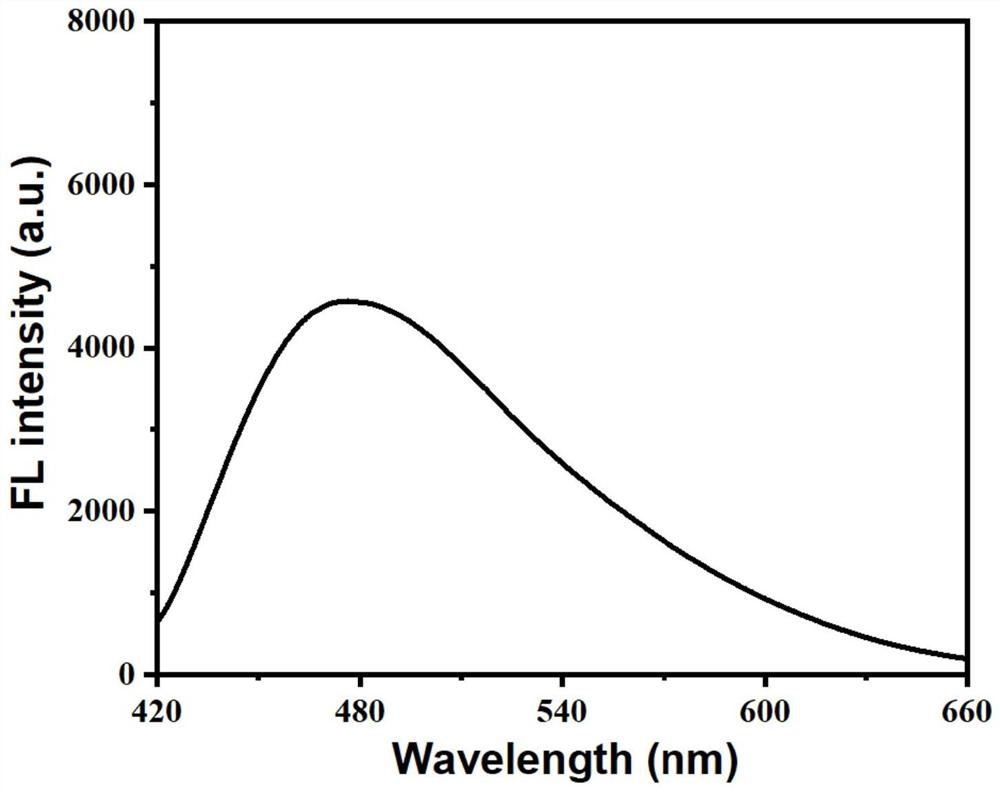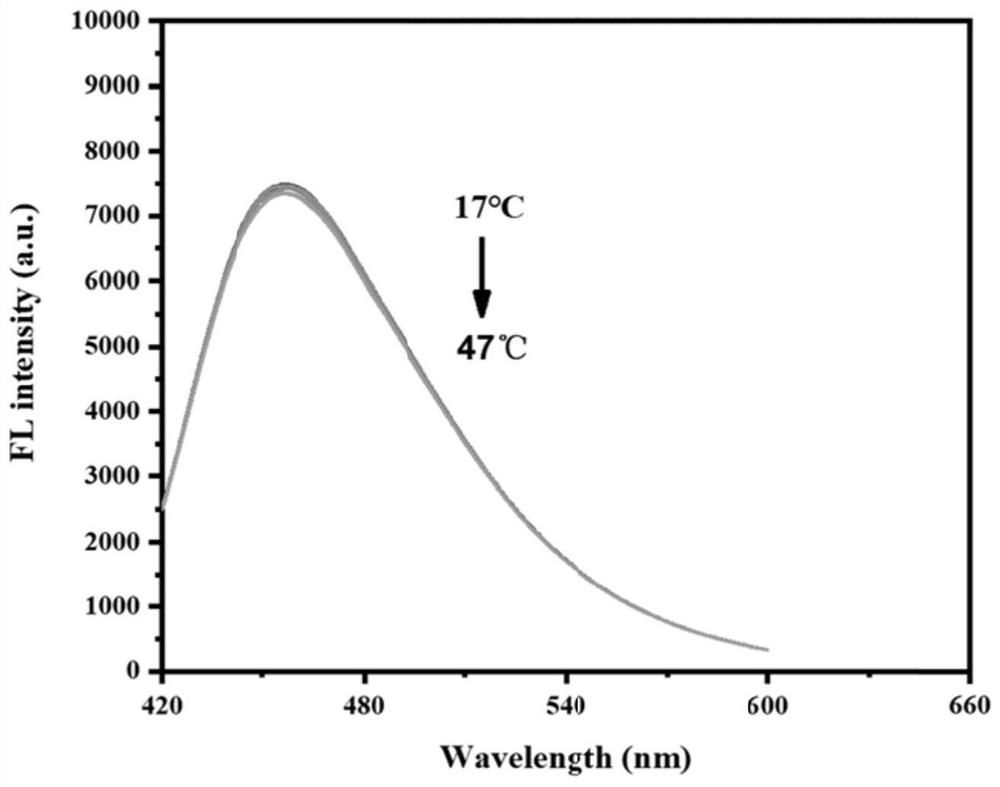Preparation method of polyisoacrylamide sphere modified fluorescent silicon dot, prepared fluorescent silicon dot and application of fluorescent silicon dot
A technology of acrylamide balls and silicon dots, which is applied in the field of fluorescent silicon dots, achieves the effects of solving poor biocompatibility and poor selectivity of temperature-sensitive detection of cancer cells, being easy to produce on a large scale, and having a simple and easy preparation process.
- Summary
- Abstract
- Description
- Claims
- Application Information
AI Technical Summary
Problems solved by technology
Method used
Image
Examples
Embodiment 1
[0038] Preparation of polyiscrylamide ball modified fluorescent silicon dots
[0039] 1, preparation of silicon nanocrystalline quantum dots
[0040] 0.3180 g sodium citrate was added to 8 ml of glycerol, and argon was attached, and 2 ml of 3-aminopropyltriethoxysilane (APTES) was added after stirring for 20 min, and the mixture was transferred to the oil bath. In the pot, the temperature was raised to 185 ° C to continue to react 1.5 h. After the reaction, the cooling to room temperature was cooled to a silaneum dot crude solution to the dialysis bag having a crystal molecular weight of 3500 dA (MWCO: 3500 Da), and the ultrapure water was used as dialysate, dialyzed 24h, and collected a solution in the dialysis bag to obtain silicon nanometers. The crystalline sub-solution, protected from light.
[0041] 2. Preparation of the modified silicon nanocrystalline quantum dots in folic acid
[0042] 2 ml silicon nanocrystalline quantum dots were added to the round bottom flask, followe...
Embodiment 2
[0046] Example 1 The optical properties of the fluorescent silicon dots modified by polyishalamide balls were prepared.
[0047] The fluorescent silicon dots modified in 10 mg of Embodiment 1 were weighed, and the PBS buffer solution (0.1 mm) of a concentration of 10 mg / ml was mounted.
[0048] Fluorescence spectrum test: Test the fluorescence emission spectrum of the above solution. Fluorescence emission spectroscopy was initiated at 404 nm, and the slit width of excitation and emission was 5 nm / 5 nm. The resulting fluorescence emission spectrum is shown figure 1 Description Successfully synthesized silicon dots with strong blue fluorescence. The experimental results show that the polyisacrylamide ball modified fluorescent silicon dots still have strong fluorescence.
Embodiment 3
[0050] Example 1 The temperature response performance of the polyishalaamine-modified fluorescent silicon dots made.
[0051] The fluorescent silicon dots modified in 10 mg of Embodiment 1 were weighed, and the PBS buffer solution (0.1 mm) of a concentration of 10 mg / ml was mounted.
[0052] Fluorescence Spectroscopy: Take the above solution to measure the fluorescence emission spectrum in 17 ° C and 47 ° C, repeat 5 times. Fluorescence emission spectroscopy was initiated at 404 nm, and the slit width of excitation and emission was 5 nm / 5 nm. The resulting temperature response performance diagram figure 2 , figure 2 It is shown that the fluorescent silicon dots of the polyishalamine sphere modified as the temperature gradually decreases, and the fluorescent silicon dot has a expected temperature responsive performance. The experimental results show that the repeated thermal cycle does not affect the fluorescence intensity of the fluorescent silicon dots modified by the polyi...
PUM
 Login to View More
Login to View More Abstract
Description
Claims
Application Information
 Login to View More
Login to View More - R&D
- Intellectual Property
- Life Sciences
- Materials
- Tech Scout
- Unparalleled Data Quality
- Higher Quality Content
- 60% Fewer Hallucinations
Browse by: Latest US Patents, China's latest patents, Technical Efficacy Thesaurus, Application Domain, Technology Topic, Popular Technical Reports.
© 2025 PatSnap. All rights reserved.Legal|Privacy policy|Modern Slavery Act Transparency Statement|Sitemap|About US| Contact US: help@patsnap.com



